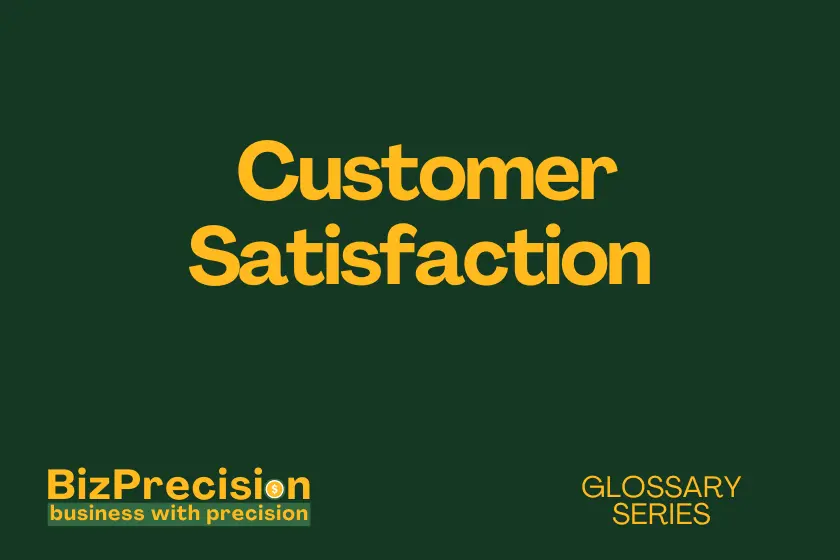What is Customer Satisfaction?
Customer satisfaction is the measure of how well products and services meet customer expectations.
This key business metric shows if you’re delivering value that makes customers happy. According to a 2023 Salesforce State of the Connected Customer report, 88% of customers say the experience a company provides matters as much as its products. This growing focus on satisfaction shapes how successful businesses operate today.
Understanding Customer Satisfaction
Key Components of Customer Satisfaction
The foundation of customer satisfaction rests on three main pillars: product quality, service delivery, and overall experience. Product quality means your offerings work as promised and solve real problems. When products meet needs consistently, customers feel confident in their choice.
Service delivery focuses on how you interact with customers. Fast response times and helpful support create positive experiences. A study by HubSpot found that 93% of customers are likely to make repeat purchases with companies that offer excellent customer service.
The overall experience combines every touchpoint a customer has with your brand. This includes your website, store layout, and employee interactions. Each interaction shapes how customers view your business.
Measuring Customer Satisfaction Metrics
You need clear metrics to track customer happiness. The Customer Satisfaction Score (CSAT) measures satisfaction with specific interactions. Ask customers to rate their experience on a scale of 1-5 or 1-10.
The Net Promoter Score (NPS) shows long-term loyalty. It asks one key question: “How likely are you to recommend us?” Responses help identify promoters and detractors.
Customer Effort Score (CES) tracks how easy you make things for customers. Lower effort often leads to higher satisfaction. Research by Gartner shows that low-effort experiences reduce costs by 37%.
Impact on Business Growth and Revenue
Happy customers drive business success. They spend more, stay longer, and tell others about you. Studies show satisfied customers spend 140% more than unhappy ones.
Retention rates improve when satisfaction stays high. It costs 5-25 times more to acquire new customers than keep existing ones. High satisfaction reduces this cost.
Word-of-mouth marketing grows naturally with satisfied customers. They become brand advocates, bringing in new business through recommendations.
Common Customer Satisfaction Challenges
Meeting diverse customer needs poses a major challenge. Different customers want different things. You must balance these varying expectations.
Maintaining consistent service quality takes work. Staff turnover and training gaps can hurt service levels. Regular training helps maintain standards.
Resource constraints often limit improvement efforts. Budget and staff shortages make it hard to fix every issue. Focus on high-impact changes first.
Strategies for Improving Customer Satisfaction
Effective Customer Feedback Collection Methods
Surveys provide direct insight into customer thoughts. Keep them short and focused on specific aspects of service. Include both rating scales and open-ended questions.
Social media monitoring catches real-time feedback. Watch what customers say about you online. This shows unfiltered opinions and emerging issues.
Customer interviews offer deep understanding. Talk directly with customers about their experiences. These conversations reveal improvement opportunities.
Creating Customer-Centric Experiences
Map the customer journey to find pain points. Look at each step customers take with your business. Fix problems that cause frustration.
Personalize interactions based on customer data. Use purchase history and preferences to tailor experiences. McKinsey reports personalization can increase revenue by 15%.
Make self-service options available. Let customers find answers independently. Good self-service tools reduce wait times and increase satisfaction.
Employee Training and Development
Train staff in customer service skills. Focus on communication, problem-solving, and empathy. Well-trained employees handle issues better.
Create clear service standards. Give staff specific guidelines for customer interactions. This ensures consistent service quality.
Reward excellent customer service. Recognize employees who exceed expectations. This motivates others to improve their service.
Technology and Tools for Enhancement
Use CRM systems to track customer interactions. Store customer history and preferences in one place. This helps provide better service.
Implement chatbots for 24/7 support. Answer common questions quickly. Save human agents for complex issues.
Analyze data to predict customer needs. Look for patterns in customer behavior. This helps prevent problems before they happen.
Customer Satisfaction Best Practices
Building Strong Customer Relationships
Listen actively to customer feedback. Show customers you value their input. Make changes based on what they tell you.
Keep promises and set clear expectations. Tell customers exactly what to expect. Then deliver what you promised.
Follow up after purchases or service. Check if customers need help. This shows you care about their experience.
Implementing Feedback Loops
Create systems to collect ongoing feedback. Use surveys, reviews, and direct contact. Make feedback collection routine.
Act quickly on customer suggestions. Show customers their feedback matters. Tell them what changes you make.
Share feedback across your organization. Let all teams see customer input. This helps everyone improve their work.
Service Recovery Strategies
Respond promptly to complaints. Address issues before they grow. Quick responses show you value customer concerns.
Empower employees to solve problems. Give staff authority to fix issues. This reduces customer wait times.
Learn from service failures. Review what went wrong. Use these lessons to prevent future problems.
Long-term Satisfaction Maintenance
Monitor satisfaction trends over time. Track changes in customer happiness. Look for patterns that need attention.
Update products and services regularly. Keep up with changing customer needs. Stay ahead of competition.
Build a customer-focused culture. Make satisfaction everyone’s job. Create systems that support this focus.
Conclusion
Customer satisfaction drives business success in today’s market. Focus on understanding and meeting customer needs. Use clear metrics to track progress.
Remember these key points:
- Measure satisfaction regularly through various methods
- Train employees to deliver excellent service
- Use technology to enhance customer experiences
- Act on feedback quickly and effectively
Start improving your customer satisfaction today. Begin with small changes that show immediate results. Build on these successes over time.
Want better customer satisfaction? Take action now. Pick one area to improve this week. Measure the results and adjust as needed. Your customers will notice the difference.







